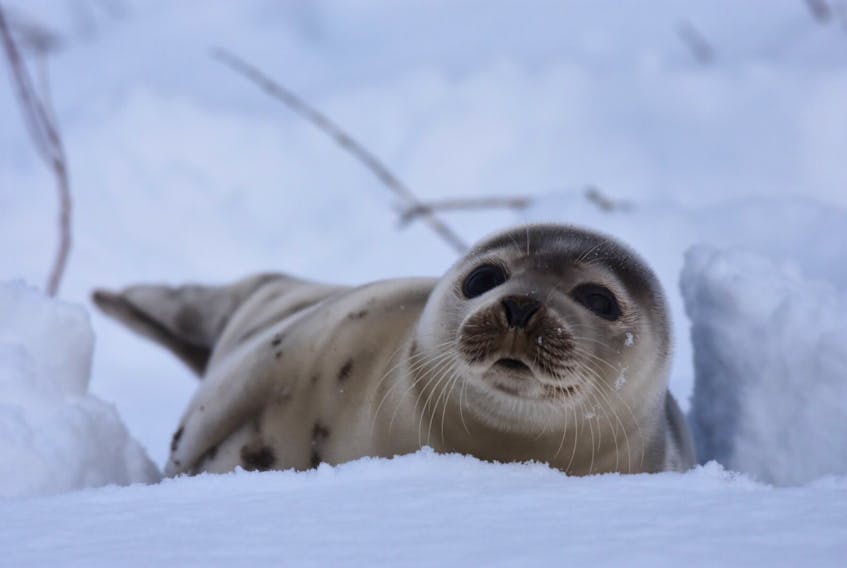TWILLINGATE, N.L. — Despite a recent decision to open a cull on sea lions in the United States, the inshore director with the Fish, Food and Allied Workers Union (FFAW) says there is little chance for any similar action in this province’s seal hunt.
At the end of 2018, U.S. President Donald Trump signed off on a bill to protect salmon stocks by opening a cull on California sea lions. While similar efforts for seals and cod stocks have been proposed by harvesters in Newfoundland and Labrador for years, Bill Broderick says the political will is not there to make it a reality in this country.
“Iceland has a seal population, they do a seal cull. Norway has a seal population and they deal with it,” said Broderick. “England has a seal problem with salmon in their rivers and they do a cull. But the political will is not in this country to do anything about it, and there’s not enough science invested into studying it.
“I think they’re afraid they’ll have to act on it if (scientists) come to the same conclusions as these other countries.”
In his role as inshore director, Broderick says he’s spoken with harvesters across the province who share the sentiment that harp seals specifically play a serious role in the stocks of species they consume — like northern cod and capelin. In light of the calls for a better cod fishery and emphasizing cod’s role in the province’s inshore fishery, Broderick feels that opening the seal hunt would play a vital part in helping cod stocks rebound.
“I advocate not for a cull, but for a sustainable hunt where we use the animal, that’s what we should be doing,” he said. “But the (federal) government hasn’t done anything to promote the hunt or the markets for it. The province has done a fair bit to promote it, but above all this needs the push of the federal government, which it doesn’t get.”
Brian Dicks is a ward councillor and chair of the commercial fisheries committee with the Qalipu Mi’kmaq First Nation band. He is also in support of expanding the commercial harvest of seals, and he says the committee is working to grow the role of Qalipu people in this commercial harvest as well.
“I advocate not for a cull, but for a sustainable hunt where we use the animal, that’s what we should be doing. But the (federal) government hasn’t done anything to promote the hunt or the markets for it. The province has done a fair bit to promote it, but above all this needs the push of the federal government, which it doesn’t get.”
-Bill Broderick, inshore director FFAW
“We’re interested in stepping up and doing what we can to promote a commercial harvest of seals,” Dicks said. “These animals are food, clothing, medicine — the whole animal can be used and we think it should be used. Especially when there is a need for protein in so many parts of the world.”
With recent sightings of seals across the province, from Codroy Valley, the Burin Peninsula and the Northern Peninsula, Dicks says the rising population of seals to seven million and higher has had a negative effect on prey like cod and salmon.
He sees expanding the markets for harp seals as a crucial way to better sustain the ecosystem.
“The herd has exploded in recent years, and with the competition for food they’re showing up outside of their traditional areas,” he said. “That’s why we’ve been positioning ourselves to work with all levels of government and stakeholders to expand markets for seal products and increase the harvest for a much needed rebalance of the marine ecosystem. This is a natural fit for us.”

The division remains
Twillingate fisherman John Gillett spent many years seal hunting, even publishing a memoir on his experiences in 2015 – titled Leaving for the Seal Hunt: The Life of a Swiler.
Gillett holds firm that the cod stocks would be rebounding much quicker if the seal populations were further reduced through expanding the yearly seal hunt. He says the Department of Fisheries and Oceans (DFO) conclusions around seals and cod are driven by political pressure from conservationists and environmentalists, rather than accurate science.
“Seals have a devastating effect on cod and the food cod eats. This is why we’re just getting back to historical numbers of cod now (after the cod moratorium of 1992),” Gillett said. “It took this long because seals have impeded their growth.
“The Canadian government is hesitant to have a cull or open season on seals because it fears the international backlash.”
Broderick agrees with the sentiment that the potential for political backlash plays a role in the DFO’s conclusions around the seals’ effect on cod stocks, and that there ought to be further scientific studies to better prove their conclusions.
“They says seals are eating cod but they’re not having any impact on cod, it’s the capelin. The seals are eating the capelin too, but they say they don’t impact capelin either, so to me they got to get their story straight,” said Broderick. “There’s no confidence in the system now when this information comes out.”
Fisheries and Land Resources Minister Gerry Byrne has voiced his support for increasing the demand for seal products. In a House of Assembly committee meeting in April 2018, the minister stated the province may not see a recovery of its fish populations if the population of harp seals is not dealt with.
“It’s an uphill push because of the power of lobbyists over the years, the echo of the anti-seal lobby from the ‘80s is still ringing fairly loudly. But the politicians have to get involved at some point in time. I think as a First Nations group we have some political leverage to encourage both a political response as well as an industry response.”
- Brian Dicks, Qalipu M’ikmaq First Nation band ward councillor
Dicks sees that the Qalipu Mi’kmaq could play a vital role in changing the political will surrounding the hunt of harp seals.
“It’s an uphill push because of the power of lobbyists over the years, the echo of the anti-seal lobby from the ‘80s is still ringing fairly loudly,” said Dicks. “But the politicians have to get involved at some point in time. I think as a First Nations group we have some political leverage to encourage both a political response as well as an industry response.”
The Central Voice attempted to reach federal Fisheries, Oceans and the Canadian Coast Guard Minister Jonathan Wilkinson for an interview but the request was denied.
While the divide and disagreement between scientists and harvesters remains strong as ever around the issue, Broderick says the FFAW will continue to put pressure on government to tackle the role seals are playing on the province’s cod fishery.
“We’ll continue to pressure the federal government to try and do something about the seal population,” he said. “If we don’t, we are going to have trouble with a lot of our fish stocks.”
Want in on the debate?
Write us a letter to the editor and email it to [email protected]. Be sure to include a name, address and daytime telephone number where the author can be contacted. Letters should be no more than 300 words.









